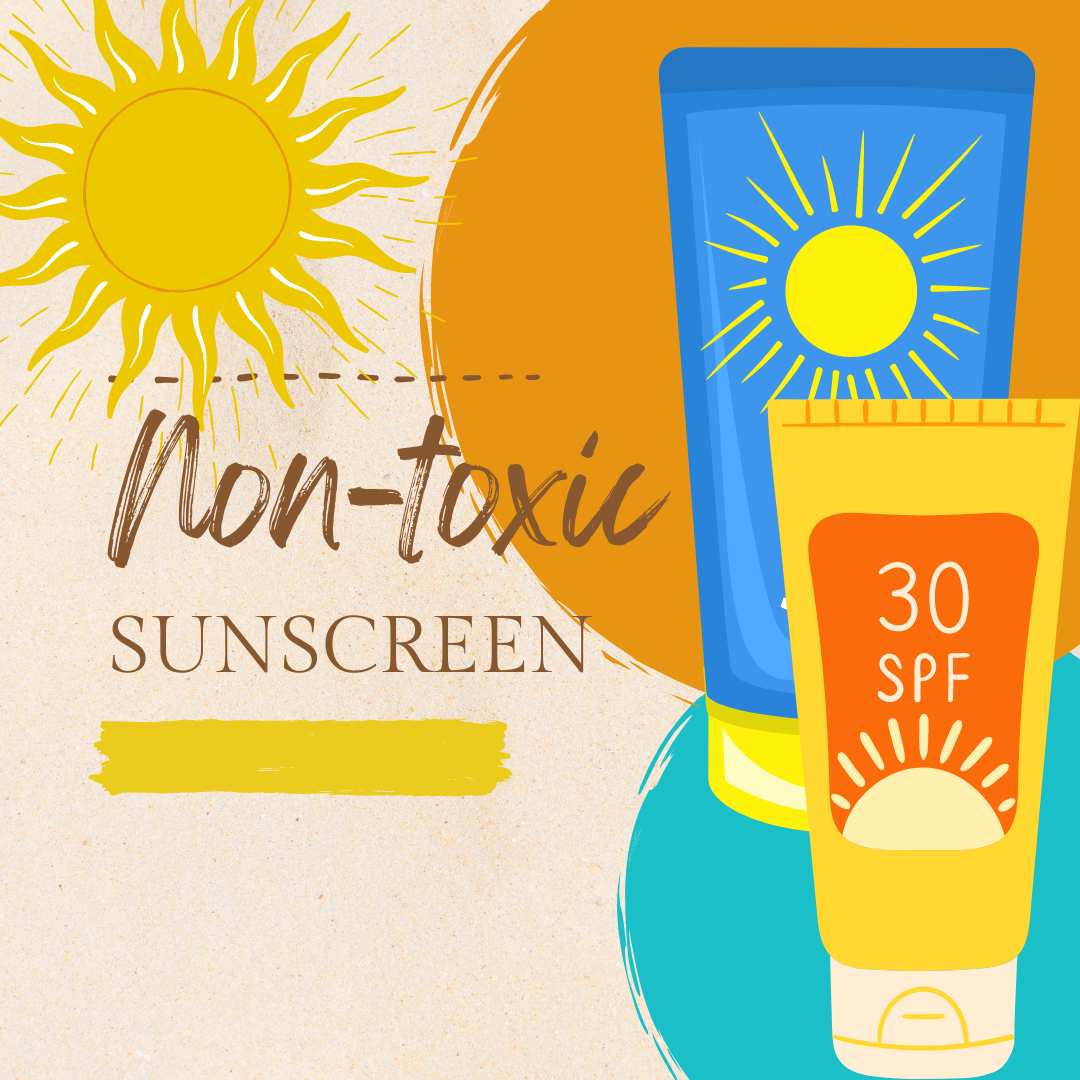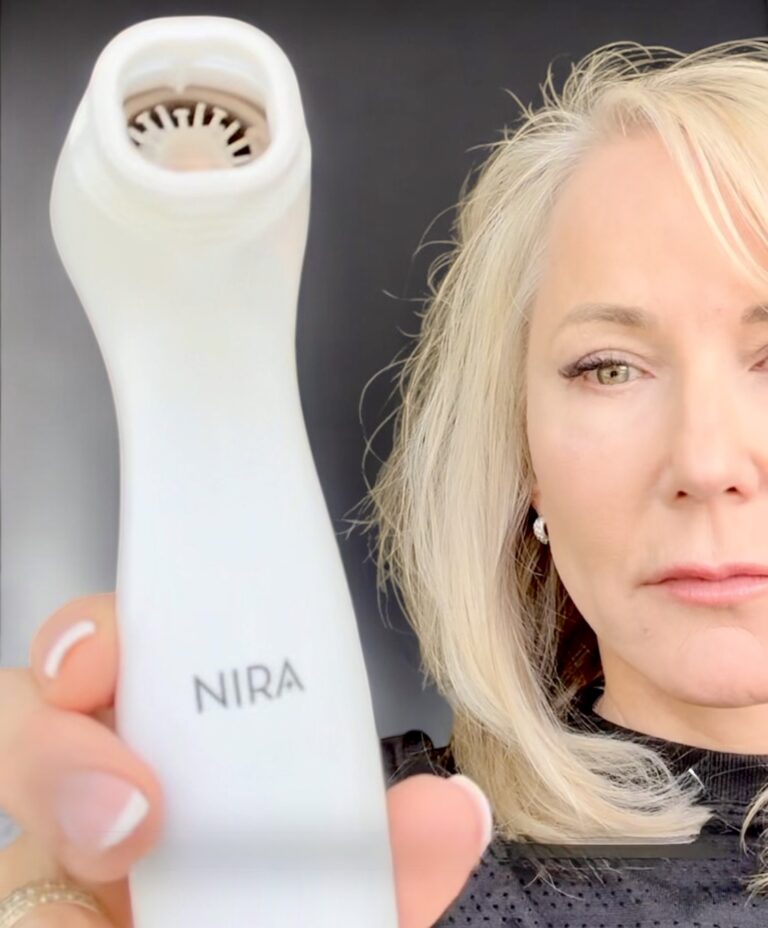The best natural non-toxic sunscreens -what buy and avoid
Before buying sunscreen this summer, learn which sunscreens are safe and non-toxic. Gosh I had no idea how many harmful chemicals are in the standard sunscreens! There is a big difference between mineral and chemical sunscreens. This post shares the best non-toxic sunscreens and what to look for. Know what ingredients to avoid. sunscreen-toxic-ingredients
Let’s dive into what makes the best non-toxic sunscreens and how to choose the right one for you and your family.
It’s so confusing when shopping for sunscreen ro determine which are the best sunscreens proven to be safe and effective. There are so many harmful ingredients in many skincare care products these days.
The Sunscreen Dilemma: Chemical vs. Mineral?
Recent research shows that chemical sunscreens can permeate the skin, entering the bloodstream and raising the risk of hormone disruption and certain cancers. Let’s learn more about why mineral sunscreens are safer for you and the environment.
Chemical Sunscreens: A Risky Choice?
Chemical sunscreens are everywhere. They use active ingredients like oxybenzone, avobenzone, and octinoxate to absorb UV radiation and convert it into heat. Despite being efficient, these chemical sunscreen ingredients can enter your bloodstream by penetrating your skin.
Studies have linked them to hormone disruption, skin irritation, and even traces found in breast milk. Plus, they’re notorious for causing allergic reactions and irritating sensitive skin.
Disclosure: The affiliate links in this post are here to make your shopping easier, featuring only the products we genuinely love and recommend. I may make a small commision from each sale. Thank you for supporting Gal PAL!

Organic Sunscreens
To be certified as an organic sunscreen, the product must contain at least 95% organic ingredients and be free of synthetic chemicals, parabens, phthalates, and other harsh additives.
- Butter Me Up Organics offers an organic, non-nano zinc oxide sunscreen with an SPF of 45+ using plant-based ingredients like coconut oil, shea butter, and mango butter.
- Organic sunscreens often combine mineral active ingredients with organic plant oils and butters that provide additional UV protection.
What is the difference Between Mineral and Chemical Sunscreens?
Sunscreens can be broadly categorized into two types: chemical and mineral (also known as physical). The primary distinction lies in their mechanism of action: chemical sunscreens absorb UV light, while mineral sunscreens reflect it.
Chemical sunscreens are more common in cosmetics and personal care products because they are lightweight, non-sticky, and blend easily. This is because of their small particle size and organic, carbon-based composition, which allows them to readily absorb into the skin. Learn more about what ingredients are in chemical sunscreens below.
Mineral sunscreens create a physical barrier on the skin, acting like a protective shield. Their larger particle size makes them less likely to be absorbed into the skin, reducing the risk of reactions, which is ideal for sensitive skin. However, this larger particle size can also lead to usability issues, such as leaving a white cast and being difficult to blend, particularly for those with higher melanin levels.

Is Physical and Mineral Sunscreen the Same Thing?
Yes! physical and mineral sunscreens are the same thing. The terms “physical sunscreen” and “mineral sunscreen” refer to sunscreens that use mineral active ingredients to protect the skin from UV radiation
How Chemical Sunscreens Work
Chemical sunscreens protect the skin by absorbing UV rays. They act like a filter, capturing the UV energy and transforming it into harmless heat that dissipates within the skin.
Some ingredients in these sunscreens can break down and oxidize with prolonged UV exposure, potentially producing harmful free radicals and reactive oxygen species (ROS). To counteract this, stabilizing agents are often added to ensure continued effectiveness.
Chemical Sunscreens’ Efficacy and Safety
Chemical sunscreens effectively shield against UVA and UVB rays but may pose risks. Since they need to be absorbed into the skin to function, they interact more deeply with skin cells, raising the likelihood of adverse reactions.
Research shows that after just one application, chemical sunscreen ingredients can persist in the body at unsafe levels for over two weeks. These compounds can build up over time, leading to hormone disruption and neurotoxicity.
How Mineral Sunscreens Work
Mineral sunscreens use ingredients like titanium dioxide and zinc oxide to protect your skin from the sun. These ingredients work like tiny mirrors, reflecting and scattering the sun’s harmful UV rays away from your skin. The great thing about mineral sunscreens is that they work really quickly, usually in about 15 minutes.
Because they sit on top of your skin instead of soaking in, they are less likely to cause irritation. They also help calm your skin and don’t clog your pores, which is awesome if you have sensitive skin or get breakouts easily.
Non-Toxic Natural Mineral Sunscreens: A Safer Bet
On the flip side, mineral sunscreens—also known as physical sunscreens—use natural ingredients like non-nano zinc oxide and titanium dioxide. These create a physical barrier on top of your skin that reflects UV rays. They’re considered a safer, non-toxic option because they’re less likely to cause skin irritation and don’t get absorbed into your bloodstream. Think of them as your skin’s personal armor against the sun’s harmful rays.
Key Ingredients Of Mineral Sunscreen- What To Look For
The best non-toxic sunscreen products contain certain ingredients. When it comes to picking out a sunscreen, here’s what to look for:
- Non-Nano Zinc Oxide: This powerhouse ingredient provides broad-spectrum protection against both UVA and UVB rays. Non-nano means the particles are large enough not to penetrate the skin, making it safer for your health.
- Titanium Dioxide: Another mineral UV filter, it’s effective primarily against UVB rays and is often paired with zinc oxide for comprehensive coverage.
- Natural Ingredients: Opt for sunscreens with organic ingredients like aloe vera, shea butter, and hyaluronic acid. These not only protect but also nourish your skin.
- Reef-Safe Formulas: Choose sunscreens labeled “reef-safe” to help protect our marine ecosystems. Avoid harmful chemicals like oxybenzone and octinoxate, which contribute to coral bleaching and damage marine life.
Sunscreens That Are Non-Toxic and Safe
Toxic Ingredients Of Chemical Sunscreens- What To Avoid
Avoid the following ingredients when shopping for safe natural non-toxic sunscreens, avoid these toxic ingredients.
1. Oxybenzone
- Concerns: Hormone disruption, skin allergies, and environmental impact, particularly coral bleaching. Oxybenzone can penetrate the skin and has been detected in human breast milk, amniotic fluid, urine, and blood.
2. Octinoxate (Octyl Methoxycinnamate)
- Concerns: Hormone disruption, skin allergies, and environmental impact. It can penetrate the skin and may contribute to hormonal imbalances.
3. Homosalate
- Concerns: Hormone disruption and enhanced absorption of other harmful chemicals. It can break down into harmful byproducts when exposed to sunlight.
4. Octocrylene
- Concerns: Can form benzophenone, a potential carcinogen, when exposed to sunlight. This is a very toxic sunscreen ingredient. Benzophenone can accumulate in the body and may be toxic to aquatic life.
5. Parabens (Methylparaben, Ethylparaben, Propylparaben, Butylparaben)
- Concerns: Hormone disruption and potential contribution to breast cancer. We know that parabens are toxic to the body and are not safe. Parabens are preservatives that can mimic estrogen and have been found in breast tissue.
6. Retinyl Palmitate (Vitamin A Palmitate)
- Concerns: Skin damage and increased risk of skin cancer when exposed to sunlight. This ingredient can break down into retinoic acid, which may speed up the development of skin tumors when exposed to UV rays.
7. Fragrances and Phthalates
- Concerns: Allergic reactions, skin irritation, and hormone disruption. Fragrances can contain hundreds of chemicals, including phthalates, which are known endocrine disruptors.
8. Nanoparticles (Titanium Dioxide and Zinc Oxide)
- Concerns: Potential cellular damage and unknown long-term health effects. This is considered a toxic ingredient. While generally considered safer than chemical filters, there are concerns about the potential for nanoparticles to penetrate the skin and cause harm.

A Few Highest Risk Sunscreens Based On EWG’s Guide For Safe Sunscreen:
The EWG states that the biggest problem with spray sunscreens is that they contain Benzene is a well-studied chemical, recognized as carcinogenic by regulatory bodies that include the FDA, Centers for Disease Control and Prevention and International Agency for Research on Cancer, among others. The presence of benzene in aerosol sunscreens is especially concerning, because it can be both inhaled and absorbed through the skin.
Short-term exposure to high levels of benzene in the air can cause dizziness and headache and even be fatal if the level is high enough. Long-term exposure is known to cause serious health issues, including leukemia and anemia from reduced blood cell production.
The Following List of Sunscreens Contain Chemicals That Are Toxic.:
This is a short list of sunscreen brands and products that are listed as “high risk” on the EWG website:
- La Roche-Posay Anthelios Ultra Light Sunscreen Lotion Spray, SPF 60
- Neutrogena Beach Defense Water + Sun Protection Sunscreen Spray, SPF 70
- Neutrogena Sensitive Skin Sunscreen Lotion, SPF 60+
- Banana Boat Kids 100% Mineral Sunscreen Spray, SPF 50
- Banana Boat Sport Ultra Sunscreen Lotion, SPF 50
- Kiss My Face Bare Naked Mineral Sunscreen Spray, SPF 30
Tried-and-True Safe Non-Toxic Sunscreen Brands
- Babo Botanicals packs these sunscreens with gentle and effective natural, mineral-based formulas. They also contain nourishing ingredients like aloe vera and shea butter.
- Thinkbaby: A favorite among parents, Thinkbaby offers sunscreens that are highly rated by the Environmental Working Group (EWG) for their safe ingredients and excellent protection.
- Badger: Known for their organic, reef-safe sunscreens, Badger products are water-resistant and perfect for all kinds of outdoor fun.
- Blue Lizard: Dermatologist-recommended, Blue Lizard sunscreens provide strong protection with a gentle, mineral-based formula.
- OneSkin- A new safe product on the market.
- Attitude: This product bears the EWG VERIFIED®
- Love Sun Body: Comes in various products all safe.
Why Use Mineral Sunscreen?
The following are the top reasons to use mineral sunscreen over chemical sunscreen:
a. Environmental Perks
Chemical sunscreens can cause coral bleaching, a devastating process where corals lose their vibrant colors and essential algae because of toxic exposure. By switching to reef-safe mineral sunscreens, you’re playing a part in protecting our precious coral reefs and marine life. Mineral sunscreens are safe for you and for the environment.
b. Health Benefits
Mineral sunscreens act as a shield, sitting on your skin rather than sinking in. This means less risk of hormone disruption and other health concerns. They’re also perfect for sensitive skin types, including kids and pregnant women, as they’re less likely to cause irritation or allergic reactions.
c. Immediate Protection
Unlike chemical sunscreens which need about 20 minutes to become effective, mineral sunscreens work as soon as you apply them. They offer broad-spectrum protection, reducing the risk of skin cancer and premature aging caused by harmful UV rays.
Tried-and-True Non-Toxic Sunscreen Brands
This is just a partial list of safe sunscreen brands that are non-toxic by EWG:
- Babo Botanicals packs these sunscreens with gentle and effective natural, mineral-based formulas. They also contain nourishing ingredients like aloe vera and shea butter.
- Thinkbaby: A favorite among parents, Thinkbaby offers sunscreens that are highly rated by the Environmental Working Group (EWG) for their safe ingredients and excellent protection.
- Badger: Known for their organic, reef-safe sunscreens, Badger products are water-resistant and perfect for all kinds of outdoor fun.
- Blue Lizard: Dermatologist-recommended, Blue Lizard sunscreens provide strong protection with a gentle, mineral-based formula.
- OneSkin– A new safe product on the market.
- Sungritty Suncare: 10 products listed as safe
- Rajuva Minerals: Daily sunscreen
- Love Sun Body: 5 products listed as safe
- Sunlara Sunscreen:
- Think Sport: Clear zinc sunscreen
- Attitude Mineral Sunscreen: 27 products listed as safe
- Aveeno: 12 products listed as safe
Choosing the Right Sunscreen for You:
- Check the Ingredients: Make sure the primary ingredients are non-nano zinc oxide or titanium dioxide.
- Go for Broad-Spectrum Protection: This ensures you’re covered against both UVA and UVB rays.
- Match Your Skin Type: Select a formula that suits your skin tone and sensitivity. For face sunscreens, opt for lightweight, non-comedogenic options to avoid clogging pores.
- Avoid Harmful Chemicals: Stay clear of sunscreens with oxybenzone, octinoxate, and other toxic ingredients.
- Think Eco-Friendly: Pick reef-safe sunscreens to help protect our oceans and contribute to the fight against climate change.
Switching to non-toxic sunscreens isn’t just a good idea—it’s essential for protecting both your health and the environment. By choosing mineral-based, reef-safe sunscreens, you can enjoy the sun without worrying about harmful UV rays, toxic chemicals, or contributing to coral bleaching. Brands like Babo Botanicals and others offer fantastic options that ensure safety and effectiveness, making them the best choice for all your sunscreen needs. So, lather up, stay protected, and enjoy your summer to the fullest!
Remember to reapply sunscreen every couple of hours when you’re in the sun, especially if you’re swimming or sweating a lot. Besides checking the SPF value, look for a sunscreen labeled “broad-spectrum protection.” This means it protects against both UVA and UVB rays. UVA rays cause wrinkles and skin aging, while UVB rays are the main cause of sunburns. Both types of rays can lead to skin cancer.
Key Takeaways:
- Sunscreens generally fall into two categories: chemical and mineral (also known as physical).
- Chemical sunscreens absorb UV light and can enter the bloodstream, while mineral sunscreens form a physical barrier that reflects UV rays.
- Ingredients in chemical sunscreens have been shown to remain in the body at unsafe levels for over two weeks.
- Mineral sunscreens provide broad-spectrum protection (against both UVA and UVB rays) and contain zinc oxide, titanium dioxide, or a mix of both; they are also anti-inflammatory and non-comedogenic.
- Zinc oxide offers better full-spectrum protection compared to titanium dioxide.
- Non-nano zinc oxide the gold standard in sunscreens because its larger particle size provides a protective shield that is safer for both skin and marine life.








